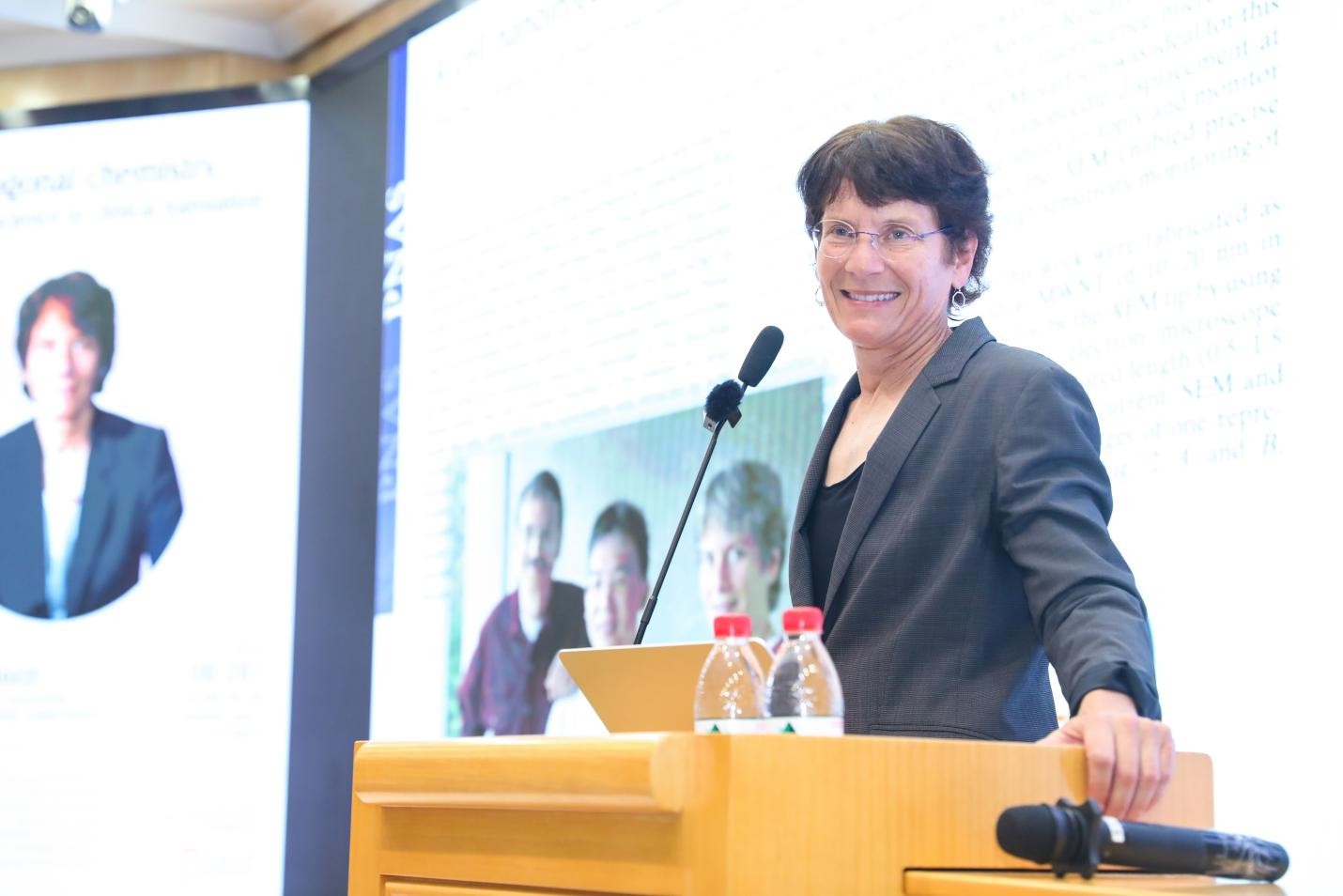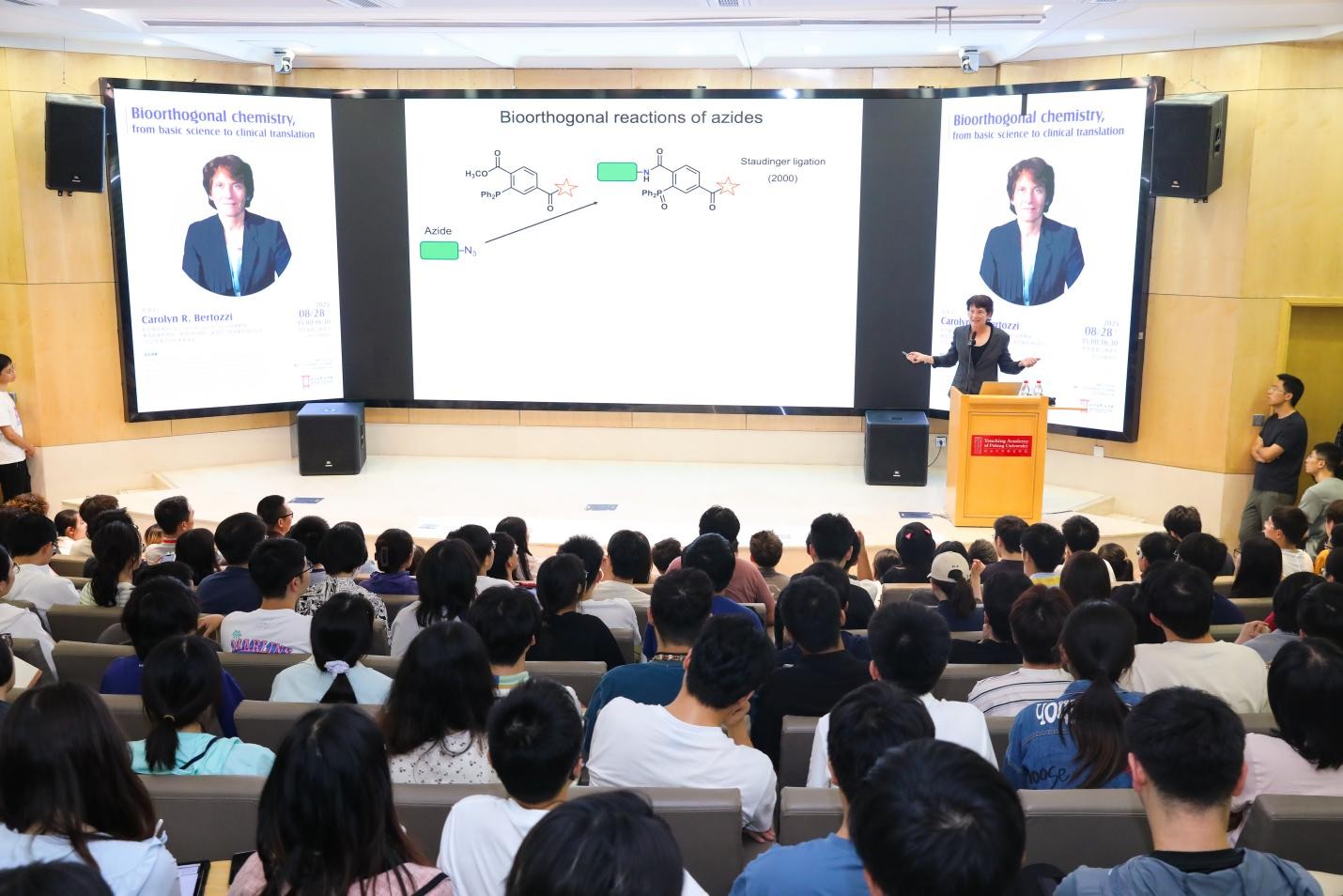
Peking University, September 2, 2025: On August 28, Peking University hosted Nobel Laureate Professor Carolyn R. Bertozzi for a lecture titled “Bioorthogonal chemistry, from basic science to clinical translation,” as part of the Peking University Global Fellowship programme.
Held at the Underground Hall of No. 2 Gymnasium, Prof. Bertozzi drew a full audience as she retraced the origins of bioorthogonal chemistry – reactions designed to function inside living systems without interfering with natural processes.
Initially developed for glycobiology, these methods led to the discovery of new roles for cell-surface glycans in cancer and the identification of glycoRNA, a surprising new class of biomolecules that is reshaping our understanding of cellular communication.
She also emphasized how bioorthogonal and related “click chemistry” reactions are now transforming medicine. These tools are central to drug development, particularly in designing antibody-drug conjugates and other bioconjugate therapies. By enabling drugs to bind precisely to biological targets, her chemistry is accelerating the translation of laboratory discoveries into clinical applications.

Prof. Bertozzi’s career, spanning Harvard, UC Berkeley, and now Stanford’s Sarafan ChEM-H Institute, demonstrates the power of curiosity-driven science at the interface of chemistry, biology, and medicine. Her election to the National Academy of Sciences, Institute of Medicine, and other leading academies attests to her far-reaching impact.

At PKU, the lecture left students and faculty deeply inspired by her vision: that chemistry, when designed for life itself, can transform the future of healthcare.
About Professor Carolyn R. Bertozzi
Prof. Bertozzi is the Anne T. and Robert M. Bass Professor of Chemistry and Professor of Chemical & Systems Biology and Radiology (by courtesy) at Stanford University, and an Investigator of the Howard Hughes Medical Institute. She is recognized as the founder of bioorthogonal chemistry, a pioneering field that earned her the 2022 Nobel Prize in Chemistry.
Written by: Akaash Babar
Edited by: Sean Tan, Chao Ranran
Photo by: Huang Jingwen